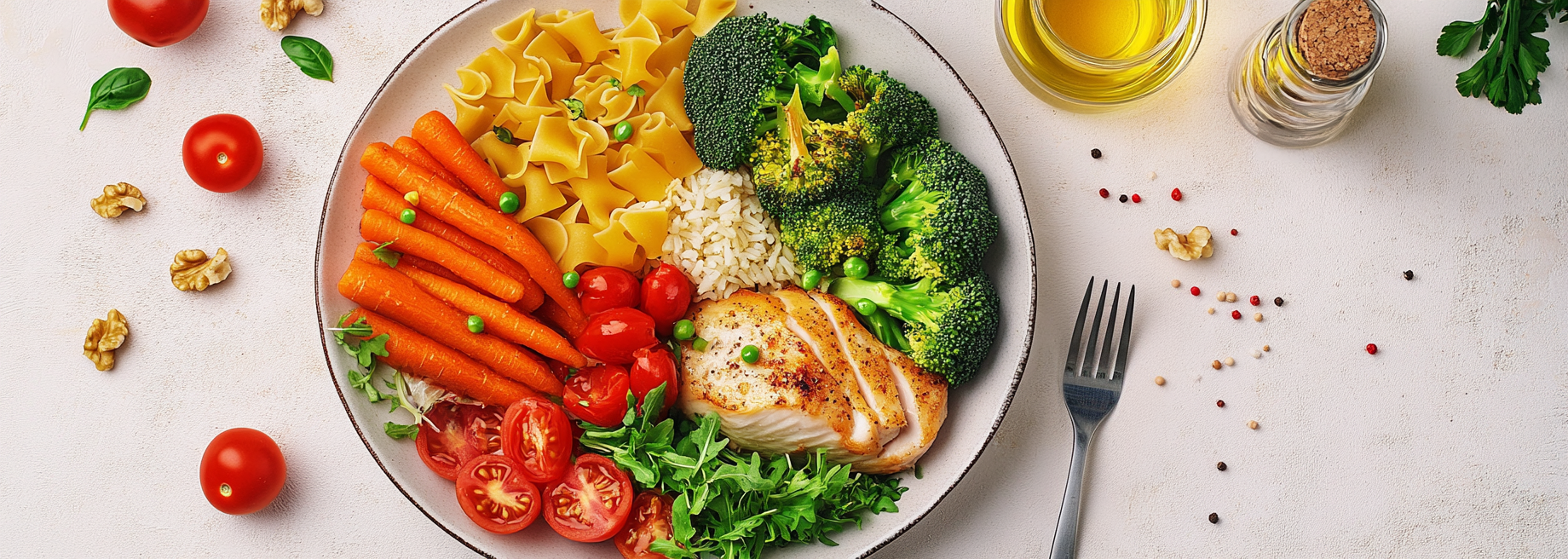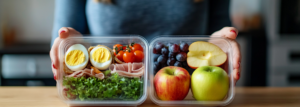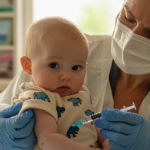
Talerz zdrowego żywienia dla dzieci i nastolatków – dlaczego zastąpił piramidę i jak go interpretować?
Spis treści:
Historia i ewolucja Piramidy Zdrowego Żywienia oraz jej znaczenie w edukacji dzieci i młodzieży
Pierwsza graficzna piramida żywienia (Food Guide Pyramid) została stworzona w 1992 roku w USA przez organizację United States Department of Agriculture (USDA). W prosty i obrazowy sposób pokazywała ona proporcje poszczególnych produktów żywnościowych i ich wzajemne zależności. Pomysł podchwyciły kolejne kraje – bardzo szybko modele żywieniowe tworzone na zbliżonym modelu publikowały inne instytucje zajmujące się zdrowiem publicznym.
Ponieważ na przestrzeni lat zalecenia dietetyczne zmieniały się, także piramidę poddawano modyfikacjom. W 2005 roku została nie tylko przebudowana, ale też „podwyższona” o poziom poświęcony aktywności fizycznej, którą uznano za równie ważną, jak inne składniki zrównoważonej diety, takie jak owoce i warzywa, produkty białkowe, nabiałowe i zbożowe.
Polska Piramida Zdrowego Żywienia została opracowana w 1995 roku przez Instytut Żywności i Żywienia. Tak jak amerykańska, wyodrębniała pięć grup produktów. U jej podstawy znajdowały się produkty zbożowe, na kolejnych poziomach: warzywa i owoce, produkty mleczne i mięsne. Piramida nie uwzględniała olejów ani słodyczy.
W 2009 roku dokonano aktualizacji piramidy, wprowadzając aktywność fizyczną i zmieniając zalecenia dotyczące częstotliwości jedzenia poszczególnych grup produktów. Zalecano, by codziennie jeść produkty zbożowe. Kolejną ważną pozycją codziennego menu były warzywa i owoce, a także produkty mleczne. Na wyższym poziomie i z zaleceniem jedzenia z umiarem zamieszczono mięso. Na tym samym poziomie piramidy umieszczono także zdrowe zamienniki dla mięsa – ryby i rośliny strączkowe.
Dlaczego piramidę zastąpił Talerz Zdrowego Żywienia?
W 2020 roku, wraz z nowymi zaleceniami zdrowego żywienia, zaproponowano w Polsce nowy wykres. Nie jest to już piramida, ale talerz, na którym wyraźnie widać, jakie powinny być proporcje codziennie spożywanych produktów. Czy ten model jest lepszy? Oczywiście każdy wzór ma swoich zwolenników i przeciwników. Przeważa jednak opinia, że talerz z zaznaczonymi wyraźnie proporcjami najważniejszych grup produktów jest bardziej intuicyjny i lepiej trafia do wyobraźni.
Talerz Zdrowego Żywienia nie jest polskim pomysłem; podobnie jak piramida, MyPlate został wymyślony w USA. Jak tłumaczono, piramida była często mylnie interpretowana – to, co na górze, uważano błędnie za najważniejsze.
Talerz opracowany przez Narodowy Instytut Zdrowia Publicznego jest bardzo podobny do amerykańskiego. Schemat jest podzielony na 3 sekcje, które pokazują, czego jeść więcej, a co ograniczać. Podstawę naszej diety, obrazowo pół talerza, powinny stanowić owoce i warzywa. Mniejszą część, ćwiartkę talerza, zajmują produkty zbożowe – kasze, chleb, produkty pełnoziarniste. Drugą ćwiartkę stanowią białka i tłuszcze z udziałem chudego mięsa i ryb, a także roślin strączkowych, orzechów i jajek.
Na schemacie nie zaznaczono aktywności fizycznej, ale – podobnie jak wskazówki, co jeść, czego unikać i jakie zdrowe zamienniki stosować – znalazła się ona w zaleceniach będących integralną częścią schematu. Do podstawowych zaleceń należą:
- zjadanie codziennie co najmniej 400 g warzyw i owoców (więcej warzyw, by ograniczać ilość cukrów prostych);
- wybieranie mięs białych, jedzenie mięsa czerwonego i przetworzonych produktów mięsnych w ilości nie większej niż 500 gramów tygodniowo;
- uzupełnianie poziomu białka rybami, nabiałem, jajkami, strączkami i orzechami;
- uzupełnianie poziomu wapnia mlekiem i produktami mlecznymi;
- dodawanie do każdego posiłku produktów zbożowych, co najmniej połowę powinny stanowić płatki owsiane, pieczywo razowe, graham, razowe makarony i grube kasze.
Jak wygląda Talerz Zdrowego Żywienia dla dzieci?
Talerz Zdrowego Żywienia dzieci nieznacznie różni się od tego dla dorosłych. Takie same są jego proporcje (1/2 owoce i warzywa, 1/4 produkty zbożowe, 1/4 nabiał, mięso, tłuszcze i jajka), określono w nim natomiast, ile porcji poszczególnych grup produktów powinno się znaleźć na talerzu dziecka przy założeniu 5 posiłków w ciągu dnia:
- 5 porcji warzyw,
- 4 porcje owoców,
- 5 porcji produktów zbożowych,
- 2 porcje tłuszczów,
- 3 porcje mleka i przetworów,
- 2 porcje produktów białkowych zwierzęcych i roślinnych.
Jadłospis dziecka i nastolatka uwzględniający te proporcje powinien być rozłożony na trzy duże posiłki i dwa mniejsze. Jego niezbędnym uzupełnieniem jest wypijanie co najmniej 1,5 l płynów niesłodzonych, ograniczenie soli i niezdrowych przekąsek.
Jak stosować Talerz Zdrowego Żywienia? Zdrowa dieta dla dziecka w praktyce
Na podstawie powyższego schematu łatwo wyobrazić sobie, z jakich składników można komponować kolejne posiłki. W każdym powinny znaleźć się warzywa i zboża, dodatkowo w dwóch posiłkach powinno pojawić się białko, w trzech nabiał, w dwóch tłuszcze, a w czterech także owoce. Koniecznie należy ograniczyć przekąski słodkie, zwłaszcza te produkowane przez przemysł. Najlepiej jeść słodkie produkty jak najrzadziej, zaspokajając potrzebę słodkiego smaku owocami.
Oto trzy przykładowe schematy komponowania jadłospisu zgodnie z zaleceniami Talerza Zdrowego Żywienia:
Schemat nr 1 na podstawie Talerza Zdrowego Żywienia
- śniadanie: owoce, płatki zbożowe, jogurt albo ser, orzechy, mleko
- II śniadanie: warzywa, owoce, ciemne pieczywo, masło, szynka drobiowa
- obiad: warzywa, ryba duszona, kasza, zupa warzywna,
- podwieczorek: owoc, warzywo, ciastko zbożowe,
- kolacja: jajecznica, ciemne pieczywo, warzywa, kakao na mleku
Schemat nr 2 na podstawie Talerza Zdrowego Żywienia
- śniadanie: jajecznica, masło, bułka, warzywa, sok owocowy,
- II śniadanie: jogurt, owoce, płatki zbożowe,
- obiad: makaron pełnoziarnisty, sos warzywny, ser żółty, zupa z zielonych warzyw,
- podwieczorek: owoc, kromka razowego chleba, pasta z ciecierzycy, warzywa,
- kolacja: placuszki z twarogiem, mus owocowy, napój mleczny
Schemat nr 3 na podstawie Talerza Zdrowego Żywienia
- śniadanie: owsianka, mleko, owoce, masło orzechowe,
- II śniadanie: mus warzywny, chleb, pasta z rybą, owoc,
- obiad: krupnik z kaszy i warzyw, frytki warzywne, kotlet drobiowy, owoce,
- podwieczorek: koktajl owocowo-warzywny, płatki kukurydziane,
- kolacja: omlet z warzywami, napój mleczny.
Zaprezentowane powyżej schematy mogą być trudne do wprowadzenia. Nie wszystkie dzieci zjadają naraz dwudaniowy obiad, posiłki składające się z tylu składników mogą być zbyt obfite. Przeszkodą numer jeden w wielu domach mogą być kulinarne upodobania dzieci, które nie tkną np. pasty rybnej czy z ciecierzycy, zadowolą się natomiast placuszkami jogurtowym od poniedziałku do niedzieli.
Podobnie jest z jedzeniem wędlin i przede wszystkim warzyw, które nie są ulubionym daniem maluchów. Warto pamiętać, że porcje dla dzieci naprawdę nie muszą być duże. Lepiej postawić na różnorodność na talerzu, niż na ilość.
By ułatwić sobie wyobrażenie, ile owoców i warzyw powinniśmy zjeść każdego dnia, w opracowanym przez Narodowe Centrum Edukacji Żywieniowej e-booku zamieszczono następujące przykłady:
- Przykład 1: garść rzodkiewek, ½ szklanki warzyw rozdrobnionych gotowanych takich jak: marchewka, buraki, włoszczyzna, 4 szparagi, 2 szklanki sałaty, 1 pełna szklanka truskawek;
- Przykład 2: ½ papryki, 2 średnie marchewki, 1 średni burak, 2 małe brzoskwinie;
- Przykład 3: 1 średni pomidor, 1 szklanka różyczek brokuła, garść fasolki szparagowej, 1 średnie jabłko.
Specjaliści z NCEZ zalecają, by wprowadzać warzywa do diety powoli, stosując się do następującego schematu:
- Krok 1: zjedz warzywo lub owoc w każdym posiłku.
- Krok 2: jedz minimum 400 g warzyw i owoców codziennie – więcej warzyw niż owoców.
- Krok 3: jedz jak najwięcej różnokolorowych warzyw i owoców – każda dodatkowa porcja warzyw i owoców to dalsze korzyści dla zdrowia.

Znaczenie aktywności fizycznej w rozwoju dzieci i nastolatków
U podstawy stosowanego obecnie modelu zdrowego żywienia jest oczywiście aktywność fizyczna – w przypadku dzieci wynosząca co najmniej godzinę dziennie. Dzieciom nie liczy się oczywiście kroków, choć gdyby to robić, do łącznego wyniku zaliczałby się trening, ale także droga do szkoły i ruch związany z codziennymi czynnościami domowymi. Nie ma wątpliwości, że regularna aktywność fizyczna ma istotny wpływ na dobre zdrowie dziecka. To także:
- poprawa kondycji,
- zmniejszenie ryzyka problemów z kręgosłupem,
- lepsza praca jelit,
- lepszy nastrój,
- wsparcie w procesie utrzymania prawidłowej sylwetki,
- korzystny wpływ na gospodarkę cukrową organizmu,
- lepszy sen,
- poprawa pamięci i koncentracji,
- zwiększenie odporności organizmu.
Jak wspierać zdrowy styl życia dzieci i młodzieży?
Najlepszym sposobem wspierania dzieci w dążeniu do zdrowego stylu życia jest… własny przykład. Jeśli dziecko od najmłodszych lat będzie zachęcane do ruchu przez aktywnych i ruszających się rodziców, podobnie jak oni będzie prowadziło aktywny tryb życia.
Podobnie jest ze zdrowym jedzeniem – jeśli cała rodzina będzie przedkładać domową kuchnię z dużą ilością warzyw nad żywność wysokoprzetworzoną, także dziecko chętniej będzie sięgać po zdrowe przekąski.
Wdrażanie zdrowych nawyków to długi proces, wymagający wielu dyskusji, eksperymentowania i cierpliwości. Ważne, by odbywało się to w atmosferze spokoju i zrozumienia.
Źródła:
- Całyniuk B., Grochowska-Niedworok E., Białek A., Czech N., Kukielcza A., Piramida żywienia – wczoraj i dziś, Probl Hig Epidemiol 2011, 92(1): 20-24.
- Bondyra-Wiśniewska B., Pawluk I., Kaczorek M., Pacyna S., Wolnicka , Wedziuk A., Nagel P., Wiem, że dobrze jem – Talerz Zdrowego Żywienia w praktyce, , Narodowe Centrum Edukacji Żywieniowej, Narodowy Instytut Zdrowia Publicznego PZH – Państwowy Instytut Badawczy, 2021, https://ncez.pzh.gov.pl/wp-content/uploads/2021/11/e-book-Talerz-Zdrowego-Zywienia.pdf [dostęp: 28.02.2025].
- Przepisy dla dzieci. Wspólne gotowanie, https://diety.nfz.gov.pl/images/E-book-Przepisy-dla-dzieci-wspolne-zdrowe-gotowanie.pdf [dostęp: 28.02.2025].








































